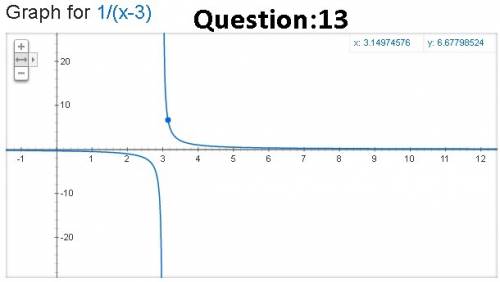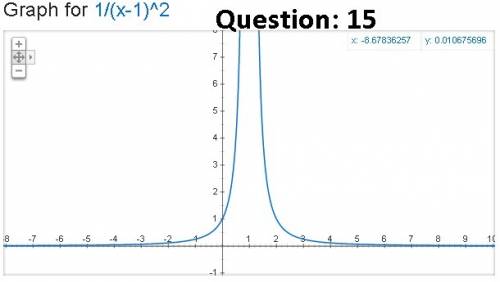(1) Ans: Option (B) -69
Given function:

The derivative of f(x) with respect to x is:

--- (1)
Plug the value of x = 10 in (1)
(1) =>

Hence the correct answer is Option (B) -69
(2) Ans: Option (C) 8
Given function:

The derivative of f(x) with respect to x is:

--- (1)
Plug the value of x = 9 in (1)
(1) =>

Hence the correct answer is Option (C) 8
(3) Ans: Option (B) -1.
Given function:

The derivative of f(x) with respect to x is:


At x = 2:

Hence the correct answer is Option (B) -1.
(4) Ans: Option (C) 9 divided by 16.
Given function:

The derivative of f(x) with respect to x is:


At x = -4:

Hence the correct answer is Option (C) 9 divided by 16.
(5) Ans: Option (D) 5
Given function:

Now apply the limit:

The correct answer is Option (D) 5.
(6) Ans: Option (D) 27
Given function:

Apply the limit:

The correct option is (D) 27
(7) Ans: Option (D) 8.
Given function:


Now apply limit:

The correct option is (D) 8.
(8) Ans: Option (A) Does not exist.
Given function:

Apply limit:

The correct answer is (A) Does not exist.
(9),(10)
Please attach the graphs! Thanks! :)
(11) Ans: limit doesn't exist (Option C)
Given function:

If both sides are equal on applying limit then limit does exist.
Let check:
If x<-1: answer would be -1+1 = 0
If x≥-1: answer would be 1-(-1) =2
Since both are not equal, as 0≠2, hence limit doesn't exist (Option C).
(12) Ans: Option (B) 7.
Given function:

If all of above three are equal upon applying limit, then limit exists.
When x < 0 -> 7-(0)^2 = 7
When x = 0 -> 7
When x > 0 -> -10(0) + 7 = 7
ALL of the THREE must be equal. As they are equal. Hence the correct option is (B) 7.
(13) Ans: -∞, x =3 (Option C)
Given function:
f(x) = 1/(x-3).
Table:
x f(x)=1/(x-3)
----------------------------------------
2.9 -10
2.99 -100
2.999 -1000
2.9999 -10000
3.0 -∞
Below the graph is attached! As you can see in the graph that at x=3, the curve approaches but NEVER exactly touches the x=3 line. Also the curve is in downward direction when you approach from the left. Hence, -∞, x =3 (Option C)
(14) Ans: Inst. velocity = -13
Given function:
s(t) = -1 -13t
Instantaneous velocity =

Therefore,

At t=8:
Inst. velocity = -13
(15) Ans: +∞, x =1
Given function:
f(x) = 1/(x-1)^2
Table:
x f(x)= 1/(x-1)^2
----------------------------------
0.9 +100
0.99 +10000
0.999 +1000000
0.9999 +100000000
1.0 +∞
Below the graph is attached! As you can see in the graph that at x=1, the curve approaches but NEVER exactly touches the x=1 line. The curve is in upward direction if approached from left or right. Hence, the correct answer is: +∞, x =1

